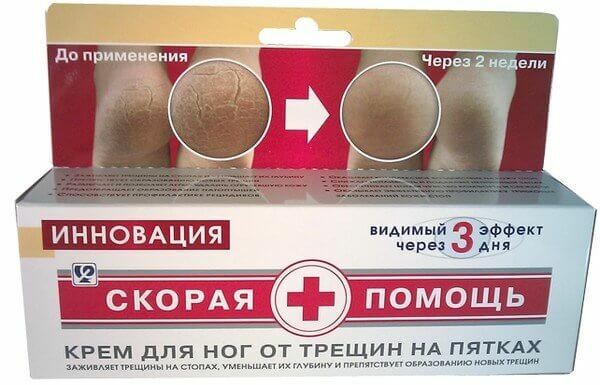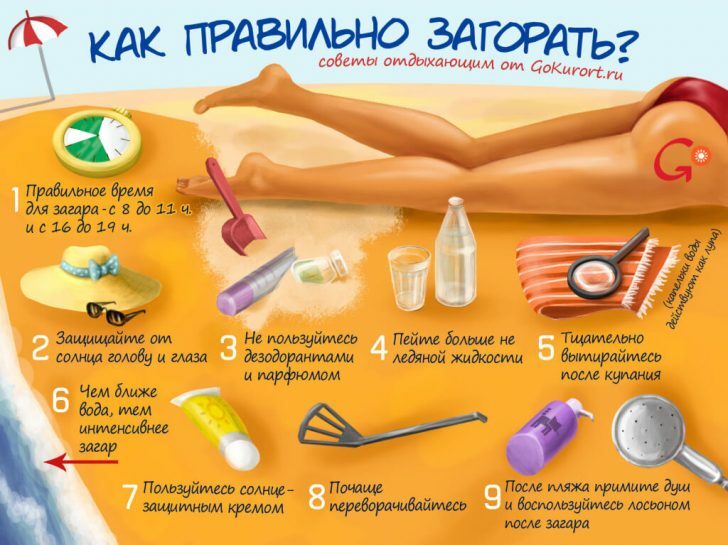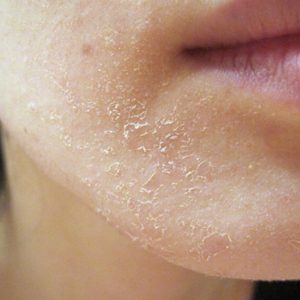Shingles: symptoms (photo) and treatment in adults
Content
- What is shingles
- Causes
- Provoking factors
- Is shingles contagious?
- Shingles symptoms
- Shingles
- Atypical forms
- When and which doctor should I contact?
- Diagnostics
- Shingles treatment
- Recommendations for patients
- Complications
- Shingles prevention
- Related Videos
What is shingles
Shingles (lat. herpes zoster, synonym - herpes zoster, herpes Zoster) Is a secondary endogenous infection of a viral nature that affects the central and peripheral nervous system.
The causative agent of this type of lichen is the varicella-zoster virus (Varicella zoster) from the herpesvirus family, which is the same virus that causes chickenpox. The virus can live for a long time in the human body in a latent state before it is reactivated into herpes zoster.
In fact, most adults today live with this virus in their bodies and they will never get shingles. But in about one in three adults, the virus can become active again. Instead of causing a second case of chickenpox, it will cause shingles. Scientists still cannot say with certainty what exactly causes the virus to go from dormant to active mode.
For unknown reasons, the disease is more common in women than men.
Symptoms and treatment in adults can vary depending on the form and stage of the disease.
Causes
Shingles in adults is caused by infection with the varicella-zoster virus, the same virus that causes chickenpox in humans. Anyone who has ever gotten the disease had chickenpox. After you've had chickenpox and recovered, the chickenpox virus can remain in your nervous system and dormant for years.

At some point, the virus can begin to actively multiply and migrate along the nerve fibers to the skin, where the rash occurs.
The area of the dermis that is innervated by this nerve is affected. Most often it is intercostal and trigeminal nerves.
The disease can occur in people of any age, most cases are diagnosed in the elderly.
The risk group also includes patients:
- recent infectious diseases;
- pregnant women;
- who have taken antibiotics, glucocorticosteroids, cytostatics for a long time;
- HIV-infected;
- people over 60 years old.
According to WHO statistics, about 10-15% of the population suffers from various types of herpes zoster. In people of mature age, the immune functions of the body are reduced, which provokes the reactivation of the virus.
Pain syndrome in elderly patients may persist even after the disappearance of the skin rash (postherpetic neuralgia).
Provoking factors
The provoking factors of the disease include:
- stress;
- prolonged hypothermia;
- oncological diseases of the lymphatic system;
- treatment with immunosuppressants;
- diabetes;
- the consequences of radiation and chemotherapy;
- steroid hormone treatment;
- organ and bone marrow transplantation.
Often, it is not possible to determine the cause of a virus reactivation. Shingles in humans usually does not recur. Convalescence occurs without any residual manifestations; in a small number of patients, neuralgia may persist for up to several months or even years.
Recurrence of the disease occurs only in 2% of adults with severe immunodeficiency.
High risk of developing herpes zoster in people who have undergone bone marrow transplantation. In 45% of patients, a disseminated form of the disease occurs, in which the rash spreads throughout the body.
Complications often occur in the form of postherpetic neuralgia, bacterial infection, and the formation of necrotic ulcers. Death occurs in 10% of cases.
Is shingles contagious?
Shingles is not contagious. You cannot pick it up from someone. But you can get the chickenpox virus from people with herpes zoster. Therefore, if you have never had chickenpox, try to stay away from anyone who suffers from shingles.
Read also:Symptoms and treatment of granuloma annulus
If you yourself suffer from this disease, try to stay away from people who have not had chickenpox or from those whose immunity is weak.
Shingles symptoms
At the initial stage of herpes zoster, the patient is disturbed by burning attacks of pain, spreading along the nerve fibers.

The pain syndrome intensifies at night and upon contact with external stimuli.
In the affected area, the sensitivity of the tissues decreases, tingling and numbness appear, the skin itches.
Patients complain of an increase in body temperature up to 38–39 °, chills and general intoxication of the body.
After 3-4 days erythematous spots appear on the skin that are dense to the touch, gradually they turn into papules filled with cloudy serous fluid.
After that, the hyperthermia disappears, and the pain sensations decrease slightly. New rashes may form within 5-7 days. Later 6-8 days the rash is covered with yellow crusts, and also after 2-3 weeks disappears completely even without treatment.
In place of the papules, pigmented areas of the dermis may remain, with the hemorrhagic form of herpes zoster, scarring of tissues may occur. The rash is usually one-sided, the generalized type is found in cancer patients. In this case, herpetic vesicles appear throughout the body, can affect internal organs and the brain.
Shingles
Gangliocutaneous form
The most common form of herpes zoster is ganglionic. It has an acute onset with chills, fever and intoxication of the body.

The intercostal nerves are affected, herpetic vesicles appear on the skin and are localized along the nerve fibers on one side.
With inflammation of the trigeminal nerve, paresis of the facial muscles and optic nerves can develop.
Involvement of the spinal ganglia in severe cases causes paralysis of the limbs and bladder sphincter.
Ophthalmic form
Ophthalmic herpes zoster forms in the innervation zone of the ophthalmic branch of the trigeminal nerve.

A characteristic rash appears on the forehead and eyelids, causing severe swelling of the skin, watery eyes, and blepharospasm (a type of facial spasm). The patient is worried about headaches, hyperesthesia and itching of the epidermis.
In severe cases, the cornea of the eye ulcerates (keratitis), vision deteriorates and even complete blindness occurs, less often - glaucoma and irit.
When the surrounding tissues are involved in the inflammatory process, optic neuritis may develop, and pupillary innervation may be impaired.
Ear shape

This form of the disease is common in adults. Symptoms of herpes zoster ear or Ramsey-Hunt syndrome are manifested by unilateral lesions of the facial nerve in the external auditory canal.
Patients have pain noise in ears, hearing impairment or loss, and dizziness.
The rash is localized in the auricle, mouth and larynx. Perhaps a violation of the taste buds of the tongue and paralysis of the facial muscles. People over 50 develop postherpetic neuralgia.
Motor form
The motor form of this disease is characterized by muscle weakness, damage to muscle fiber cells.
The rash appears on the neck, shoulder in the intercostal region. Inflammation of the nerve ganglia can lead to paralysis of the abdominal muscles and diaphragm.
Atypical forms
There are forms of herpes zoster, in which the symptoms may be atypical for this disease. These include:
- Abortive form - proceeds without a pronounced pain syndrome, inflamed spots appear on the skin, but a rash does not form. Treatment takes place quickly, without complications;
- Hemorrhagic - This form is characterized by blistering eruptions filled with blood. On the affected area of the epidermis, sensitivity decreases, numbness and tingling occurs, the skin is very itchy;
- Bullous form - the clinical manifestations of this form are manifested by large vesicles with uneven edges;
- Gangrenous (necrotic) - in place of papules, purulent ulcers are formed, covered with a black scab. Deep tissue damage occurs, necrotic processes develop when a bacterial infection is attached;
- Generalized (disseminated) the form - occurs in patients with immunodeficiency and in cancer. In this form of the disease, the rash covers the entire body on both sides, mucous membranes, internal organs and the brain are affected.
About 40% of patients with cancer of the lymphatic system suffer from a generalized form of the disease, in 10% of cases they develop meningoencephalitis, hepatitis, viral pneumonia and other serious complications.
In any form of this disease, damage to the ganglia of the autonomic nervous system can occur, which can cause atypical symptoms:
- violation of the stool;
- delay in urination;
- chilliness of the limbs;
- pronounced venous pattern;
- drooping of the eyelids;
- drooping of the eyeball;
- constriction of the pupil.
Read also:Vitiligo (cutaneous disease)
Sometimes suppuration, tissue ulceration with subsequent scarring join the clinical manifestations of the disease.
When and which doctor should I contact?
If you suspect you have herpes zoster, see your doctor right away, especially if:
- near the eye it hurts and an incomprehensible rash appeared;
- your growth falls in the interval of 60-80 years;
- an incomprehensible rash has spread widely on the body, which is very itchy.
When the first signs appear, you need to seek help from a dermatologist, infectious disease specialist, immunologist or neurologist.
Diagnostics
In the presence of skin rashes, it is not difficult to establish the correct diagnosis. Difficulties arise in the initial stages of the disease, while there are no clinical symptoms. Against the background of acute pain, intoxication and fever, a pulmonary infarction can be mistakenly determined, appendicitis, pleurisy, or angina.
Laboratory diagnostic methods that can be prescribed for herpes zoster:
- PCR analysis (polymerase chain reaction) - helps to identify the DNA of the virus in a sample of biomaterial (bubble liquid, blood, saliva). If, during the study, the varicella-zoster virus is detected, the diagnosis is confirmed;
This method is effective for abortive form and damage to internal organs. The study is especially effective in patients with immunodeficiency.
- analysis on AIDS - indicated in generalized form, in such patients with AIDS, lichen is one of the first manifestations of immunodeficiency;
- ELISA is an enzyme-linked immunosorbent assay that allows you to detect antibodies to the virus, determine the primary infection and reactivation;
- immunofluorescence analysis - the study is aimed at detecting antigens, while the immune complexes are stained with special dyes and are clearly visible in ultraviolet rays.
Laboratory tests are prescribed for patients with atypical forms of pathology, in which there are no external signs.
Other tests are usually not prescribed, since changes in the composition of the blood have a typical picture of other viral diseases.
Shingles treatment
Uncomplicated forms of this ailment disappear in 3-4 weeks, in rare cases, the course lasts up to 10 weeks. Treatment is primarily aimed at reducing pain and preventing the development of complications.
Patients are prescribed antiviral drugs for oral administration and skin treatment:
- Acyclovir;
- Famciclovir;
- Valacyclovir.
Medicines activate the body's immune responses to the virus, speeding up and reducing the number of external manifestations. They are effective only in the first 3 days after the onset of a skin rash..
Also, to relieve acute pain, patients are prescribed non-steroidal anti-inflammatory drugs:
- Ibuprofen;
- Ketorolac;
- Naproxen.
If the treatment with analgesics is ineffective, narcotic pain relievers are prescribed.
With a necrotic form, antibiotics are indicated.
Antidepressants and sedatives can help reduce neuralgic symptoms.
Recommendations for patients

When rashes appear, you should not take a hot bath often; a cool shower is more suitable.
Read also:Dermatomyositis
Water procedures can be carried out only after the body temperature has dropped.
It is forbidden to scratch the rash and try to remove the crusts, this leads to tissue infection and the formation of purulent ulcers, which will complicate treatment.
The patient must use personal hygiene products. For severe itching, you can take antihistamines (Diazolin, Suprastin).
The patient is contagious until the crust appears. When a healthy child comes into contact with a person suffering from herpes zoster, the baby may develop chickenpox. For adults with strong immunity, the patient does not pose a threat.
It is not recommended to lubricate the rash with brilliant green, fucorcin or iodine, the drugs can cause burns.
Clothing should be loose and not irritating to the affected area. It is best to wear cotton underwear. It is impossible to treat vesicles with warming ointments, external treatment is ineffective even antiviral agents.
It is necessary to strictly follow the doctor's recommendations, self-medication can worsen the condition, lead to complications, infection and scarring of the skin.
Complications
If you do not treat severe and atypical forms of this depriving people with a weakened immune system, severe complications can occur.
Postherpetic neuropathy characterized by persistence of pain for a long time after treatment and the disappearance of signs of shingles.

Uncomfortable sensations can bother you for several months, years, or be present for life. Patients against the background of constant pain syndrome fall into depression, become irritable.
Meningoencephalitis appears with damage to the membranes of the brain. Patients complain of migraine, vomiting, photophobia, fever.
Later, there are symptoms of irritation of the meninges: increased tone of the occipital, muscles of the lower extremities, head tilt causes flexion in the knee joints, flexion of one of the limbs in the joint leads to a symmetrical action of the opposite legs.
Meningoencephalitis is a serious illness that has an unfavorable prognosis with a possible fatal outcome.
Herpetic myelitis - This is one of the complications of shingles, which causes inflammation of the spinal cord.

Depending on which section is affected, there is paresis of the upper or lower extremities, urinary retention and bowel emptying, muscle tone decreases.
With myelitis of the upper cervical region and inflammation of the phrenic nerve, respiratory distress occurs.
Hemiplegia - complete loss of mobility of the arm and leg on one side of the body. In the limbs, muscle tone increases, paresis of facial muscles occurs.
People suffering from diabetes mellitus, AIDS who have undergone organ transplantation are most susceptible to the development of complications.
Shingles prevention

It is important for patients at risk to observe preventive measures to prevent the development of the disease.
It is necessary to avoid hypothermia, stressful situations, to timely treat concomitant diseases. A healthy lifestyle and a balanced diet will help strengthen the immune system.
Vaccination is an effective method of prevention.
Passive immunization increases the activity of cellular immunity in elderly people over 60 years of age.
It has been clinically proven that vaccination reduces the likelihood of developing lichen by 50%, in other cases the disease proceeds with less severe symptoms, treatment is faster and without complications.
The pain syndrome is more easily tolerated, but the likelihood of postherpetic neuralgia does not decrease.
Contraindications for vaccination are:
- individual intolerance to the components of the drug;
- immunodeficiency;
- taking corticosteroids, immunosuppressants;
- tuberculosis;
- pregnancy.
The vaccine is administered once, at the injection site itching, redness and blistering occur.



